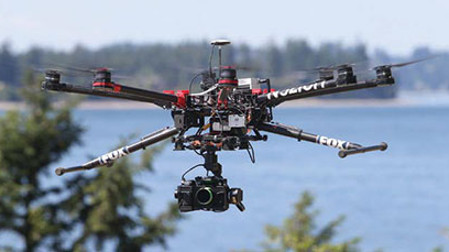FAA Drone Rules Go Into Effect

WASHINGTON– Transportation Secretary Anthony Foxx and Federal Aviation Administration Administrator Michael Huerta announced the implementation of the first operational rules for routine commercial use of small unmanned aircraft systems (UAS or “drones”). The regulations adopted on June 21, 2016 officially take effect today, Aug. 29.
The provisions of the new rule – formally known as Part 107 –are designed to minimize risks to other aircraft and people and property on the ground.
The FAA has several processes in place to help users take advantage of the rules that go into effect today with regard to waivers and use in various air-space classifications.
The FAA is offering a process to waive some of the rule’s restrictions if an operator demonstrates the proposed flight will be conducted safely under a waiver. Users must apply for these waivers. The FAA is issuing more than 70 waivers today, Aug.29, based on petitions for Sec. 333 exemptions. These waivers will be posted on Sept. 1. The majority of the approved waivers were for night operations under Part 107.
Users can operate their unmanned aircraft in Class G uncontrolled airspace without air traffic control permission. Operations in Class B, C, D and E airspace need air traffic approval. Users must request access to controlled airspace via the electronic portal at www.faa.gov/UAS.
The FAA will evaluate airspace authorization requests using a phased approach. Operators may submit their requests starting today, but air traffic facilities will receive approved authorizations, if granted, according to the following tentative schedule:
Class D & E Surface Area: Oct. 3, 2016
Class C:Oct. 31, 2016
Class B: Dec. 5, 2016
The FAA said it would make every effort to approve requests as soon as possible, but the actual processing time would vary, depending on the complexity of an individual request and the volume of applications the FAA receives. The agency is urging users to submit requests at least 90 days before they intend to fly in controlled airspace.
The FAA said it would use safety data from each phase to ensure appropriate mitigations are in place as small UAS operations are integrated into controlled airspace.
Testing also becomes available today. Testing centers nationwide can now administer the Aeronautical Knowledge Test required under Part 107. After an operator passes the test, she or he must complete an FAA Airman Certificate and/or Rating Application to receive a remote pilot certificate.
It may take up to 48 hours for the website to record that the applicant has passed the knowledge test. The FAA expects to validate applications within 10 days. Applicants will then receive instructions for printing a temporary airman certificate, which is good for 120 days. The FAA will mail a permanent Remote Pilot Certificate within 120 days.
In the future, the FAA said it also would address operations not covered by Part 107 without a waiver, including operations over people, beyond-line-of-sight operations, extended operations, flight in urban areas, and flight at night.
Part 107 does not apply to model aircraft. Model aircraft operators must continue to satisfy all the criteria specified in Sec. 336 of Public Law 112-95 (which is now codified in part 101), including the stipulation they be operated only for hobby or recreational purposes.
Get the TV Tech Newsletter
The professional video industry's #1 source for news, trends and product and tech information. Sign up below.
